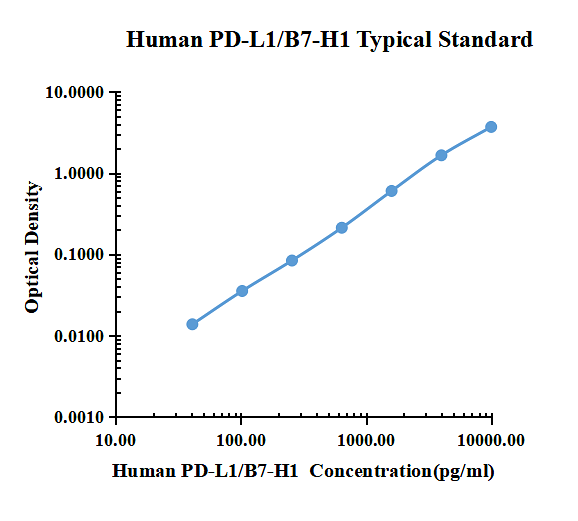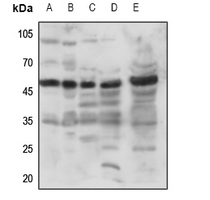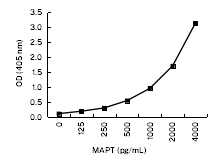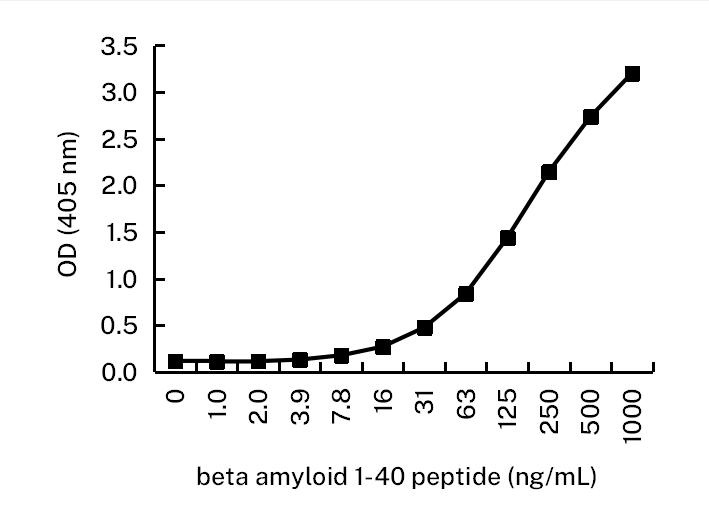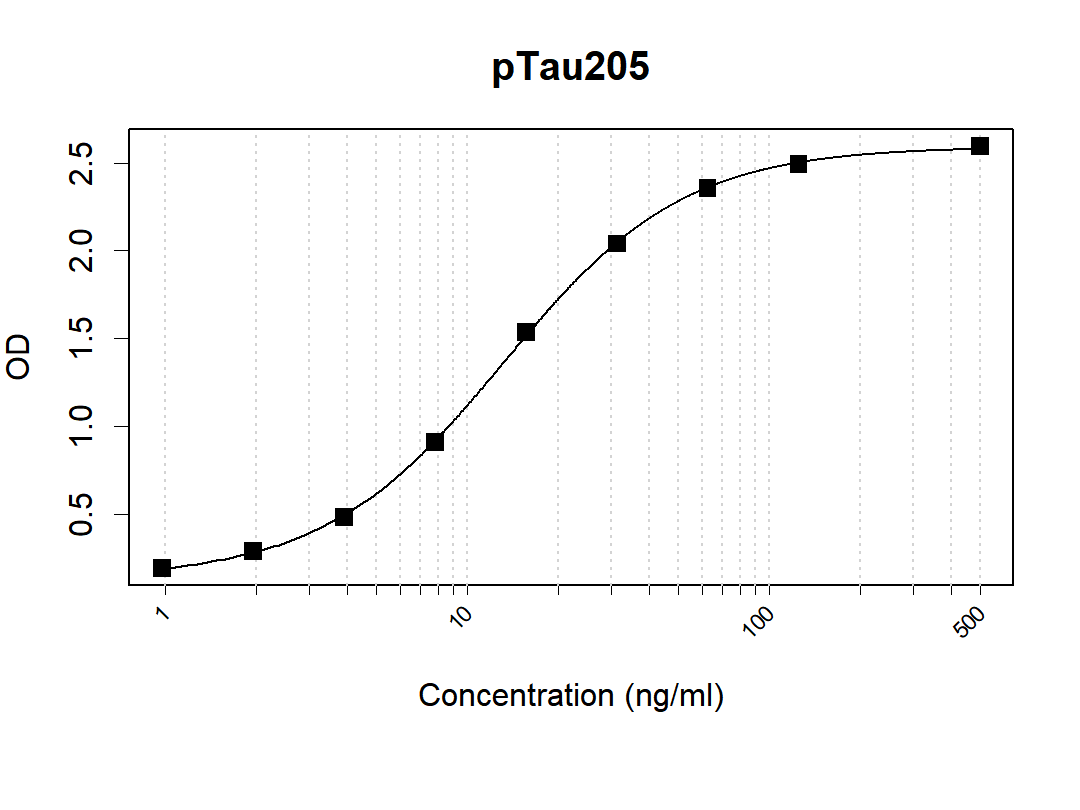Human PD-L1/B7-H1 ELISA Kit
CAT.NO. : AEH0048
RMB Please choose
RMB Please choose
Size:
Trail, Bulk size or Custom requests Please contact us
*产品价格可能会有所调整,请以品牌方官网实时更新的价格为准,以确保准确性。
Background
Human B7 homolog 1 (B7-H1), also called programmed death ligand 1 (PD-L1) and programmed cell death 1 ligand 1 (PDCD1L1), is a member of the growing B7 family of immune proteins that provide signals for both stimulating and inhibiting T cell activation. Other family members include B7-1, B7-2, B7-H2, PDL2 and B7-H3. B7 proteins are members of the immunoglobulin (Ig) superfamily. Their extracellular domains contain 2 Ig-like domains and all members have short cytoplasmic domains. Among the family members, there is about 20-25% amino acid identity. Human and mouse B7-H1 share approximately 70% amino acid sequence identity. B7-H1 has been identified as one of two ligands for programmed death-1 (PD-1), a member of the CD28 family of immunoreceptors. The B7-H1 gene encodes a 291 amino acid (aa) type I membrane precursor protein with a putative 18 aa signal peptide, a 220 aa extracellular domain, a 21 aa transmembrane region, and a 31 aa cytoplasmic domain. Human B7-H1 is constitutively expressed in several organs such as heart, skeletal muscle, placenta and lung, and in lower amounts in thymus, spleen, kidney and liver. B7-H1 expression is upregulated in a small fraction of activated T and B cells and a much larger fraction of activated monocytes. B7-H1 expression is also induced in dendritic cells and keratinocytes after IFN-gamma stimulation. Interaction of B7-H1 with PD-1 results in inhibition of TCR-mediated proliferation and cytokine production. The B7-H1:PD-1 pathway is involved in the negative regulation of some immune responses and may play an important role in the regulation of peripheral tolerance.
Typical data
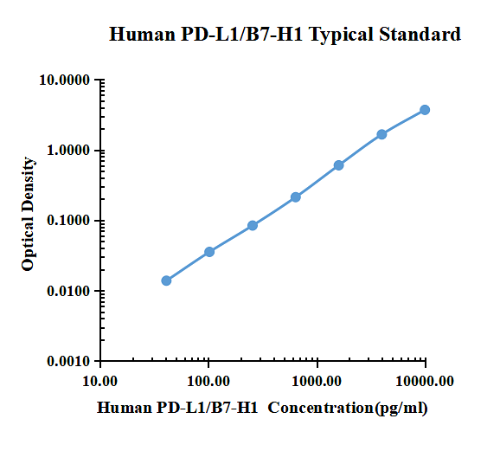
| pg/ml | O.D. | Average | Corrected | |
| 0.00 | 0.0240 | 0.0272 | 0.0256 | |
| 40.96 | 0.0357 | 0.0431 | 0.0394 | 0.0138 |
| 102.40 | 0.0584 | 0.0637 | 0.0611 | 0.0355 |
| 256.00 | 0.1099 | 0.1093 | 0.1096 | 0.0840 |
| 640.00 | 0.2389 | 0.2377 | 0.2383 | 0.2127 |
| 1600.00 | 0.6145 | 0.6434 | 0.6290 | 0.6034 |
| 4000.00 | 1.6350 | 1.7290 | 1.6820 | 1.6564 |
| 10000.00 | 3.6290 | 3.8300 | 3.7295 | 3.7039 |
Precision
| Intra-assay Precision | Inter-assay Precision | |||||
| Sample Number | S1 | S2 | S3 | S1 | S2 | S3 |
| 22 | 22 | 22 | 6 | 6 | 6 | |
| Average(pg/ml) | 209.2 | 1061.1 | 2965.9 | 236.7 | 1178.3 | 3104.7 |
| Standard Deviation | 13.1 | 60.9 | 181 | 15.6 | 50 | 169.9 |
| Coefficient of Variation(%) | 6.3 | 5.7 | 6.1 | 6.6 | 4.2 | 5.5 |
Intra-assay Precision (Precision within an assay) Three samples of known concentration were tested twenty times on one plate to assess intra-assay precision.
Inter-assay Precision (Precision between assays) Three samples of known concentration were tested six times on one plate to assess intra-assay precision.
Spike Recovery
The spike recovery was evaluated by spiking 3 levels of human PD-L1 into health human serum sample. The un-spiked serum was used as blank in this experiment.
The recovery ranged from 96% to 127% with an overall mean recovery of 117%.
The recovery ranged from 96% to 127% with an overall mean recovery of 117%.
Sample Values
| Sample Matrix | Sample Evaluated | Range (pg/ml) | Detectable (%) | Mean of Detectable (pg/ml) |
| Serum | 30 | n.d.-124.46 | 63 | 36.72 |
Serum/Plasma – Thirty samples from apparently healthy volunteers were evaluated for the presence of PD-L1 in this assay. No medical histories were available for the donors.
 New Products
New Products




 Protocol Booklet
Protocol Booklet
